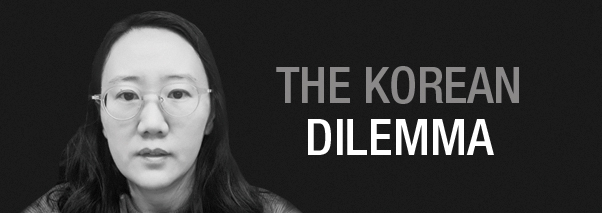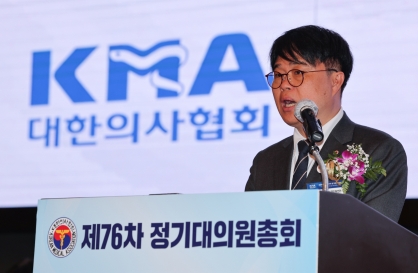[Korean Dilemma] Does Korea need more doctors?
Raise medical student quota, as well as the price of lifesaving medical care
By Kim So-hyunPublished : July 4, 2023 - 17:40

Like a lot of things, the controversy over increasing the admissions quota of medical colleges in South Korea, unchanged for 18 years at 3,058 students per year, sounds like an argument over whether the country should lean more toward Europe or more toward America.
The solution to such problems for a country is usually to go its own way by learning from others’ mistakes.
According to statistics of the Organization for Economic Cooperation and Development, the number of practicing physicians in Korea per 1,000 people, including practitioners of Korean traditional medicine, stood at 2.51 in 2020, much lower than the OECD average of 3.7, but only slightly lower than that of the US (2.64 as of 2019) and Japan (2.6 in 2020).
In the UK, where the publicly funded National Health Service provides low-priced or free health care, patients often face long waits for treatment, which can harm health outcomes. According to the UK Office for National Statistics, some 248,000 UK residents traveled abroad to get medical treatment in 2019, compared to 120,000 in 2015.
The US health care system provides wide access to prompt treatment, but it is unaffordable for many people.

Compared to most other countries, health care in Korea is affordable and highly accessible.
One of the first things many Koreans living abroad do when they visit Korea is see a doctor. South Korea provides top-class medical services at a low price thanks to its National Health Insurance system, which was revamped under former Presidents Kim Dae-jung and Roh Moo-hyun to reduce the burden on patients. Hardly anyone in Korea dies because they can’t afford surgery or treatment.
One downside of having low-priced medical care is a higher tendency for overtreatment. Because patients pay less than 10,000 won ($7.60) for consultations with specialists in internal medicine and pediatrics, Koreans go to the doctor for everything. A lot of the clinics in these fields offer extra treatments that are not covered by the national health insurance, such as intravenous vitamin therapies that help invigorate patients.
Surgery for a common thyroid gland cancer called encapsulated follicular variant of papillary thyroid carcinoma, which is no longer even called cancer in the US due to its highly indolent behavior, for instance, is still common in Korea partly because cancer surgeries are inexpensive in Korea compared to other countries.
The biggest problem of health care in Korea now is the mismatch between the fields where doctors are needed and the actual workforce available. Medical specialties like dermatology, ophthalmology, plastic surgery, orthopedics, rehabilitation medicine and radiology are highly sought after by doctors for their lucrative business prospects and better work-life balance.
By contrast, specialties referred to as “essential medical care” in Korea that save lives, such as pediatrics, cardiothoracic surgery, general surgery, obstetrics and gynecology, suffer from a chronic shortage of doctors. This is partly because the amount they receive for consultations and treatments in these specialties is low and there is less opportunity to provide treatments not covered by the National Health Insurance system.
Young doctors say the fact that these specialties are more prone to medical lawsuits, as they deal directly with life-and-death situations, is another reason that makes them reluctant to choose them.
Merely giving out more medical licenses won’t change the skewed preference for certain specialties. To help prevent a collapse of pediatrics and other lifesaving fields, Korea should raise the amount clinics are paid for essential services that suffer from a shortage of doctors.
A task force of the ruling People Power Party proposed to the government last week that the payments for pediatric care should be significantly increased.
Once the decision is made to raise the prices of essential medical services, doctors should have no reason to protest increasing the medical student quota, especially when so many physicians are overworked.
The Korean government has long sought to increase the student quota of medical colleges to keep up with the rapidly aging population, but has failed to do so due to fierce opposition from the Korea Medical Association, which staged strikes in the midst of the COVID-19 pandemic. The KMA claims to represent about two-thirds of the country’s physicians.
With public hospitals and hospitals in the provinces struggling to recruit emergency room doctors and “essential medical care” specialists, some doctors have called for establishing a medical academy that fosters doctors who are required to work as public officials after graduation.
Germany, which also suffers from a lack of doctors in rural areas, has increased the medical student quota by up to 2.2 percent each year since 2018 to a total of 11,752 last year. Its health minister is calling for another 5,000 places.
Japan has increased the number of places at medical schools by 1,705 in 12 years to 9,330 in 2019. The US has raised it by 38 percent over 20 years.
According to the state-funded Korea Development Institute, South Korea needs to increase the medical student quota by 5 percent each year from 2024 through 2030 in order to solve the shortage of physicians.
If the KMA refuses to budge even after raising the prices of pediatric care and other lifesaving fields, the government should consider allowing doctors from other countries to practice medicine in Korea.





![[Weekender] How DDP emerged as an icon of Seoul](http://res.heraldm.com/phpwas/restmb_idxmake.php?idx=644&simg=/content/image/2024/04/25/20240425050915_0.jpg&u=)



![[Music in drama] An ode to childhood trauma](http://res.heraldm.com/phpwas/restmb_idxmake.php?idx=644&simg=/content/image/2024/04/25/20240425050929_0.jpg&u=)









![[Herald Interview] Mistakes turn into blessings in street performance, director says](http://res.heraldm.com/phpwas/restmb_idxmake.php?idx=652&simg=/content/image/2024/04/28/20240428050150_0.jpg&u=20240428174656)
